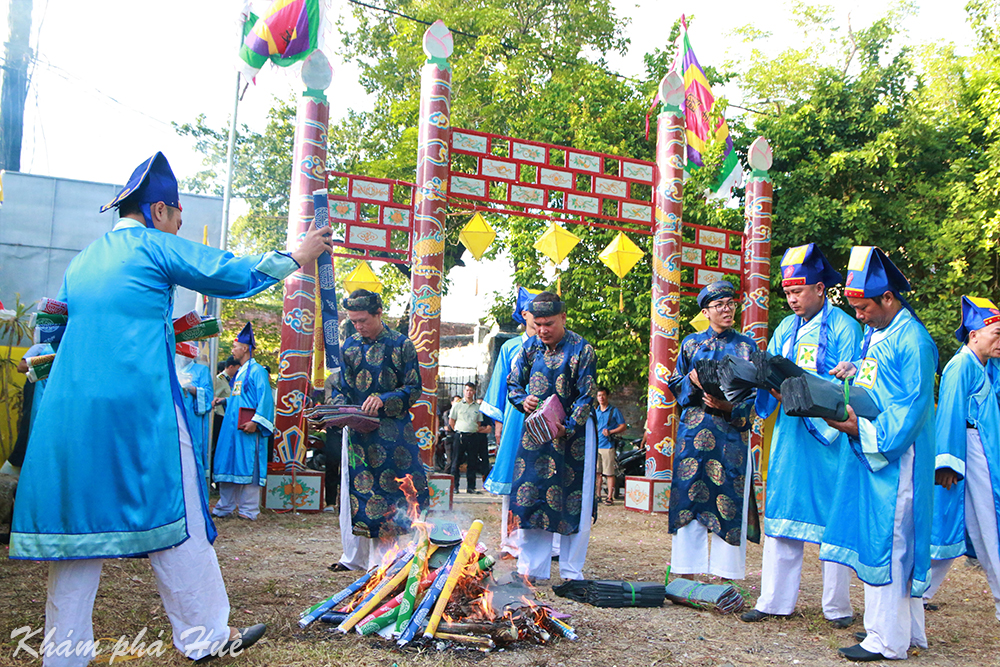Initially, the Soul Altar was made from earth, but later it was built using more permanent materials to become a place of worship. Within the Soul Altar, there is a plaque commemorating the soldiers who sacrificed their lives during the Fall of the Imperial Capital. Additionally, the dynasty added a three-compartment house to store offerings and related artifacts. They also established a small caretaker team to look after the Soul Altar.
During the monarchy era, on the day of the ritual, Lady Từ Cung had soldiers carry offerings to the Soul Altar. Various officials from within the Inner City also participated in the ceremony. When the offerings and monetary contributions were abundant, the organizing committee would provide cattle and pigs for the ceremony.
At that time, the "Lễ tế Đàn âm Hồn" (Ceremony of the Đàn âm Hồn) was considered a national ritual, and the Imperial Regent of the Imperial City was the presiding officiant. This ritual persisted until 1945. After 1945, due to the dissolution of the Nguyen dynasty, the Soul Altar was no longer protected as before. The structures of the Soul Altar gradually deteriorated due to war and human interference. Nevertheless, the local population continued to uphold the worship of the Soul Altar through the establishment of Phổ Phước Lợi (a community devoted to the ) with the participation of around 100 households.
The restoration and ceremonious organization of the "Lễ tế Đàn âm Hồn" contribute to highlighting the value of the historical relic and preserving the spiritual and cultural beauty of the people of the Ancient Capital of Hue.

The Âm Hồn ceremony was restored and solemnly held at the Soul Altar, contributing to promoting the value of the relic and preserving the cultural and spiritual beauty of the people of Hue (Photo: Ngoc Bich)
Acknowledging the importance of the Soul Altar, the local authorities and the direct management unit, the Center for the Conservation of Hue Ancient Capital's Heritage, officially recognized the Soul Altar as a provincial-level historical and cultural relic on December 15, 2013.
For the first time in May 2018, the "Lễ tế Đàn âm Hồn" was held in accordance with the traditional ritual of the dynasty on this historical site and has been maintained as a ceremonious event up to the present day.